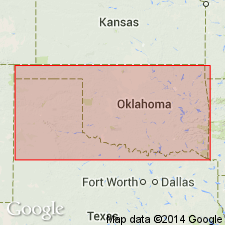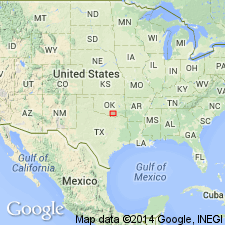
- Usage in publication:
-
- Cravatt formation
- Modifications:
-
- Original reference
- AAPG geologic province:
-
- Arkoma basin
Summary:
Pg. 132, 134. Cravatt formation. Defined as upper part of Kite group (new). Consists of hard cherty lithographic and argillaceous limestones and slates. Average thickness 60 to 75 feet. Conformably underlies Bois d'Arc limestone; conformably overlies Haragan formation.
Source: US geologic names lexicon (USGS Bull. 1200, p. 977).

- Usage in publication:
-
- Cravatt member
- Modifications:
-
- Revised
- AAPG geologic province:
-
- Arkoma basin
Summary:
Pg. 4 (fig. 3), 7, 41-45, fig. 4. Rank reduced to member of Bois d'Arc formation. Overlies Haragan formation; base of Cravatt arbitrarily placed at base of lowest cherty bed of any appreciable thickness. Underlies Fittstown member (new) of Bois d'Arc limestone. Age is Silurian and Devonian. Type locality given.
Type locality: in NE/4 SW/4 SW/4 sec. 2, T. 2 S., R. 7 E., Pontotoc Co., southeastern OK. Name taken from original allotment owner, Katy Cravatt.
Source: US geologic names lexicon (USGS Bull. 1200, p. 977).
For more information, please contact Nancy Stamm, Geologic Names Committee Secretary.
Asterisk (*) indicates published by U.S. Geological Survey authors.
"No current usage" (†) implies that a name has been abandoned or has fallen into disuse. Former usage and, if known, replacement name given in parentheses ( ).
Slash (/) indicates name conflicts with nomenclatural guidelines (CSN, 1933; ACSN, 1961, 1970; NACSN, 1983, 2005, 2021). May be explained within brackets ([ ]).

